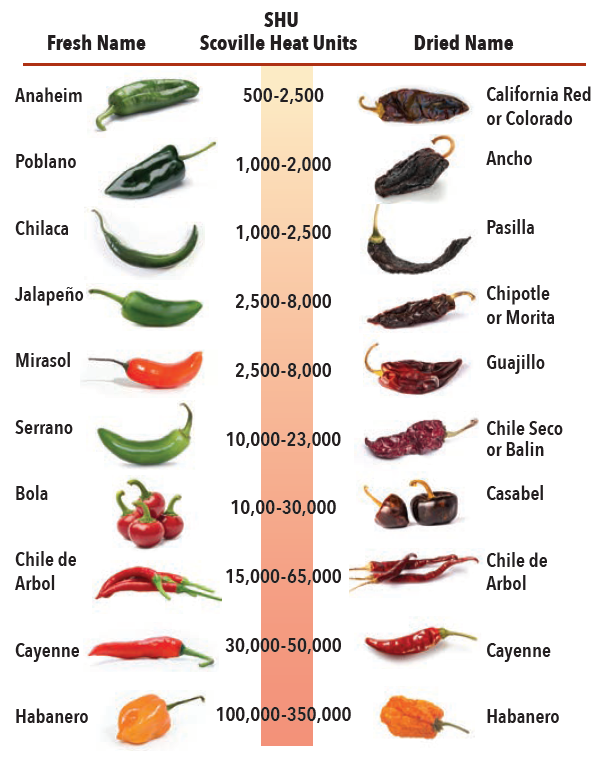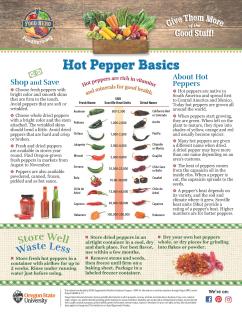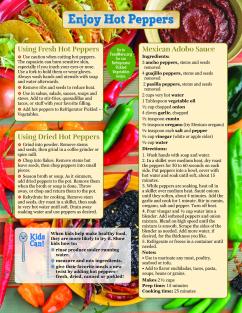Hot Pepper Basics
Hot peppers are rich in vitamins and minerals for good health.
Shop and Save
- Choose fresh peppers with bright color and smooth skins that are firm to the touch. Avoid peppers that are soft or wrinkled.
- Choose whole dried peppers with a bright color and the stem attached. The wrinkled skins should bend a little. Avoid dried peppers that are hard and crisp or broken.
- Fresh and dried peppers are available in stores year round. Find Oregon-grown fresh peppers in markets from August to November.
- Peppers are also available powdered, canned, frozen, pickled and as hot sauce.
About Hot Peppers
- Hot peppers are native to South America and spread first to Central America and Mexico. Today hot peppers are grown all around the world.
- When peppers start growing, they are green. When left on the plant to mature, they ripen into shades of yellow, orange and red and usually become spicier.
- Many hot peppers are given a different name when dried. A dried pepper may have more than one name depending on an area’s customs.
- The heat of peppers comes from the capsaicin oil in the inside ribs. When a pepper is cut, the capsaicin spreads to the seeds.
- A pepper’s heat depends on its variety, and the soil and climate where it grew. Scoville heat units (Shu) provide a rating of a pepper’s heat. Higher numbers are for hotter peppers.
Store Well Waste Less
- Store fresh hot peppers in a container with airflow for up to 2 weeks. Rinse under running
water just before using. - Store dried peppers in an airtight container in a cool, dry and dark place. For best flavor, use within a few months.
- Remove stems and seeds, then freeze until firm on a baking sheet. Package in a labeled freezer container.
- Dry your own hot peppers whole, or dry pieces for grinding into flakes or powder.
Enjoy Hot Peppers
Using Fresh Hot Peppers
- Use caution when cutting hot peppers. The capsaicin can burn sensitive skin, especially if you touch your eyes or nose. Use a fork to hold them or wear gloves. Always wash hands and utensils with soap and water afterwards.
- Remove ribs and seeds to reduce heat.
- Use in salsas, salads, sauces, soups and stews. Add to stir-fries, quesadillas and tacos, or stuff with your favorite filling.
- Add hot peppers to Refrigerator Pickled Vegetables.
Using Dried Hot Peppers
- Grind into powder. Remove stems and seeds, then grind in a coffee grinder or spice mill.
- Chop into flakes. Remove stems but leave seeds, then chop peppers into small pieces.
- Season broth or soup. As it simmers, add dried peppers to the pot. Remove them when the broth or soup is done. Throw away, or chop and return them to the pot.
- Rehydrate for cooking. Remove stem and seeds, dry roast in a skillet, then soak in very hot water until soft. Drain away soaking water and use peppers as desired.
Recipe
Mexican Adobo Sauce
Kids Can!
When kids help make healthy food, they are more likely to try it. Show kids how to:
- rinse produce under running water.
- measure and mix ingredients.
- give their favorite meals a new twist by adding hot peppers - fresh, dried, canned or pickled!




